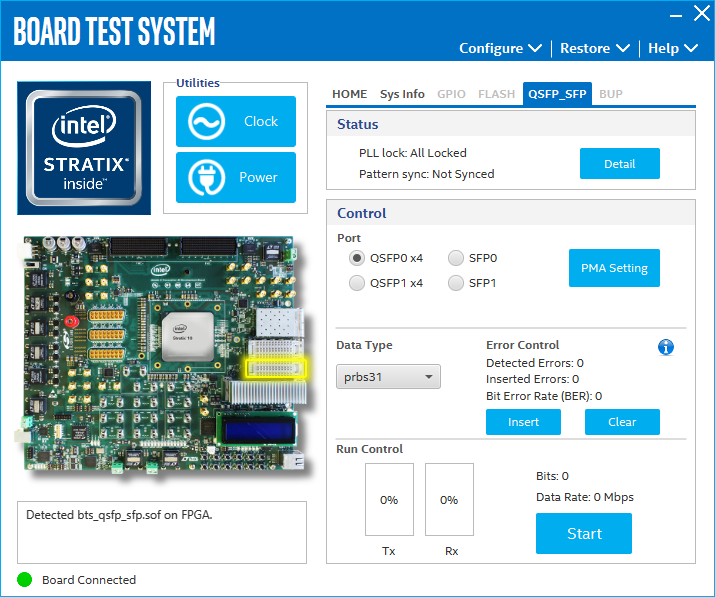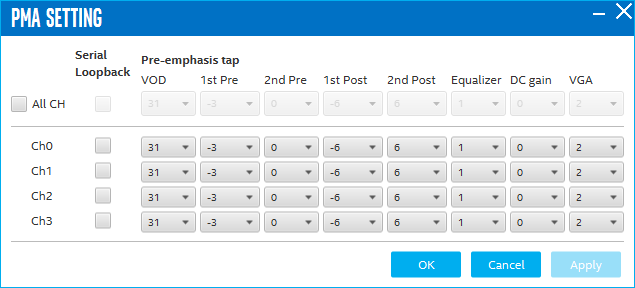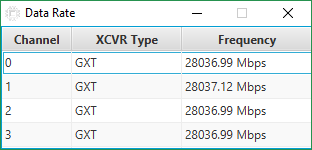Visible to Intel only — GUID: lbc1487271913492
Ixiasoft
Visible to Intel only — GUID: lbc1487271913492
Ixiasoft
6.3.10. The QSFP and SFP+ Tab
The QSFP and SFP+ Tab allows you to run transceivers QSFP and SFP+ loopback tests on your board. You can run the test using either electrical loopback modules or optical fiber modules.

Status
- PLL lock: Shows the PLL locked or unlocked state
- Pattern Sync: Shows the pattern synced or not state. The pattern is considered synced when the start of the data sequence is detected.
- Details: Shows the PLL lock and pattern sync status.

Port
- QSFP0 x4
- QSFP1 x4
- SFP0
- SFP1
PMA Setting
- Serial Loopback: Routes signals between the transmitter and the receiver.
- VOD: Specifies the voltage output differential of the transmitter buffer.
- Pre-emphasis tap:
- 1st pre: Specifies the amount of pre-emphasis on the pre-tap of the transmitter buffer.
- 2nd pre (L-Tile): Specifies the amount of pre-emphasis on the second pre-tap of the transmitter buffer.
- 1st post: Specifies the amount of pre-emphasis on the first post tap of the trasnmitter buffer.
- 2nd post (L-Tile): Specifies the amount of pre-emphasis on the second post tap of the transmitter buffer.
- Equalizer: Specifies the AC gain setting for the receiver equalizer in four stage mode.
- DC Gain: Specifies the DC Gain setting for the receiver equalizer in four stage mode.
- VGA: Specifies the VGA gain value.

Data Type
- PRBS: pseudo-random 7-bit sequences (default)
- PRBS15: pseudo-random 15-bit sequences
- PRBS23: pseudo-random 23-bit sequences
- PRBS31: pseudo-random 31-bit sequences
- HF: highest frequency divide-by-2 data pattern 10101010
- LF: lowest frequency divide by 33 data pattern
Settings Hf and LF are for transmit observation only and are not intended for use in the receiver data detection circuits.
Error Control
- Detected Errors: Displays the number of data errors detected in the received bit stream.
- Inserted Errrors: Displays the number of errors inserted into the transmit data stream.
- Insert Error: Insert a one-word error into the transmit data stream each time you click the button. Insert Error is only enabled during transaction performance analysis.
- Clear: Resets the Detected Errors counter and Inserted Errors counter to zeros.
Run Control
TX and RX performance bars: Show the percentage of maximum theoretical data rate that the requested transactions are able to achieve.
Start: This control initiates the loopback tests.

Tx (Mbps) and Rx (Mbps): Show the number of bytes of data analyzed per second.